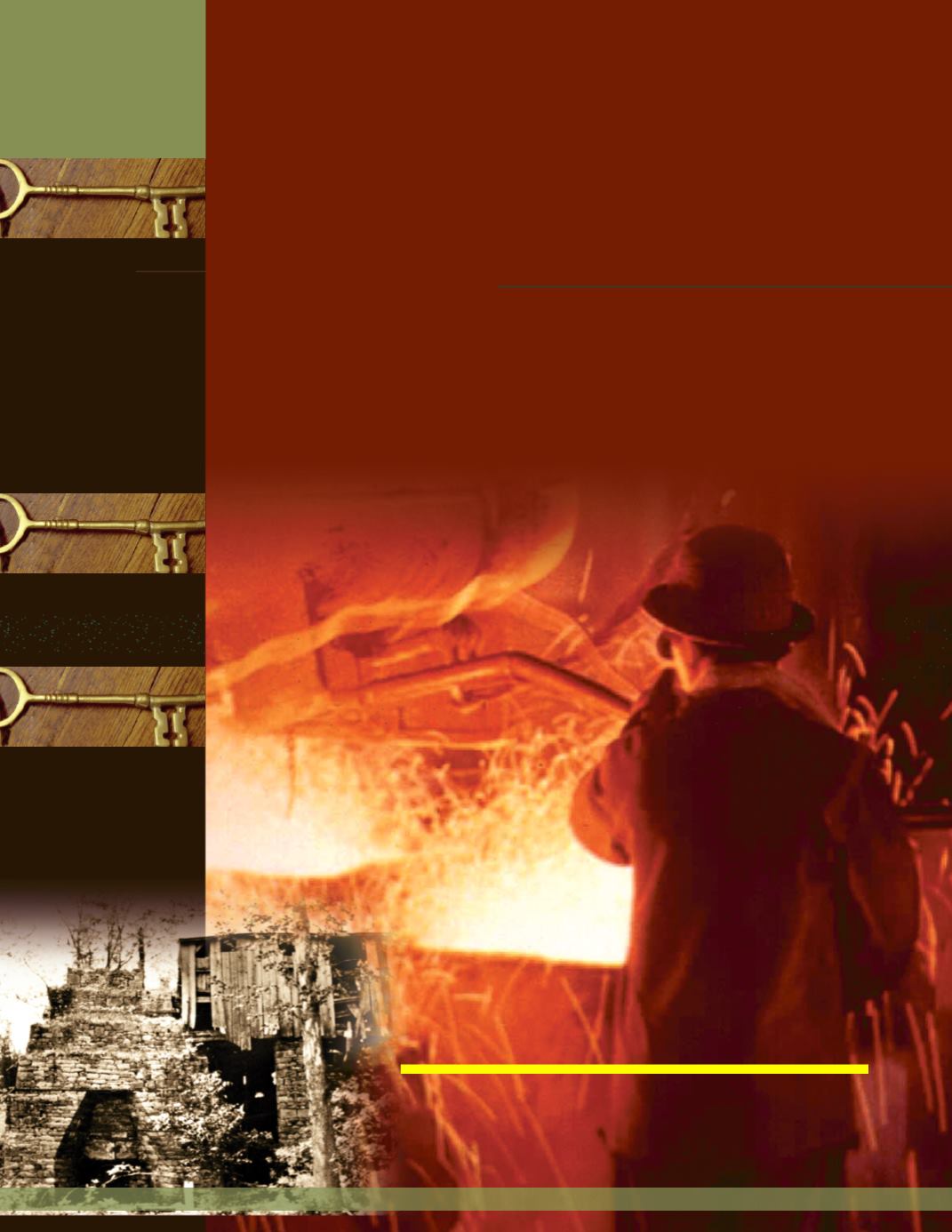
Railroads Demand Iron
In the 1840s-1850s, the railroad industry created a huge demand for iron. Iron
was needed for building trains, steamengines, and iron rails. From its early
beginnings, Pennsylvania was well known for its iron furnaces, but this was a small
scale industry. With an increasing demand for iron products, larger factories began to
open and expand into what became known as the
iron smelting
industry.
Iron ore
is a natural resource which has to bemined from the earth. Smelting is a
heating process that allows workers to remove all unwanted
parts from the iron ore and fuse or melt together the left-over
pure iron. In this pure form, iron was formed intomany
different products.
It was also discovered that a by-product of
bituminous
coal (soft coal), called
coke
, was an ideal fuel for the iron
smelting industry. Western Pennsylvania had even
larger deposits of soft coal than hard coal. Because of
their location near the coal deposits,
Pittsburgh
and
Johnstown
became centers for the iron smelting industry.
In addition, Pittsburgh’s three-river systemwas an ideal
location for moving iron ore, coal, and iron products.
LESSON
16
KEY
WORDS
iron smelting
iron ore
bituminous
coke
refined
kerosene
petroleum
boomtowns
derricks
ingenuity
KEY
PLACES
Pittsburgh
Johnstown
Titusville
KEY
PEOPLE
Samuel Keir
Edwin Drake
T
HE
I
RON
I
NDUSTRY
E
XPANDS
,
T
HE
O
IL
I
NDUSTRY
E
MERGES
F
OCUS
Q
UESTIONS
1. How did the iron smelting industry contribute to the growth of railroads?
2. What was the role of petroleum in Pennsylvania’s industrial growth?
Hopewell Furnace, in operation from1771-1883, helped begin our
transformation into an industrial giant. Early in its history, the furnace
produced about 100 cannons for the Continental Navy during the
AmericanRevolution. Today, you can visit theHopewell Furnace
National Historic Site.
72
Understanding Pennsylvania


